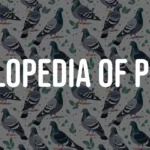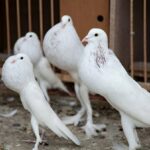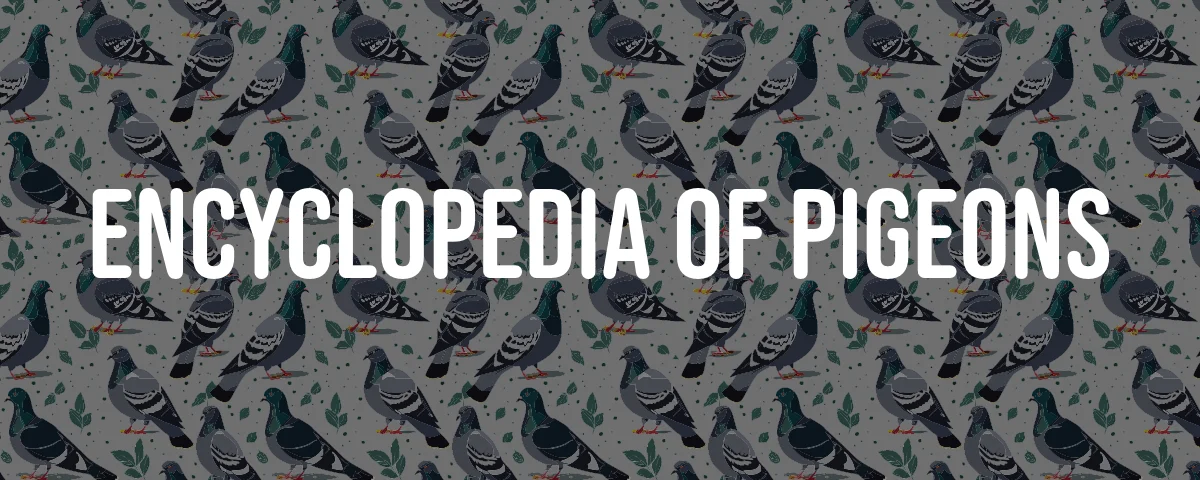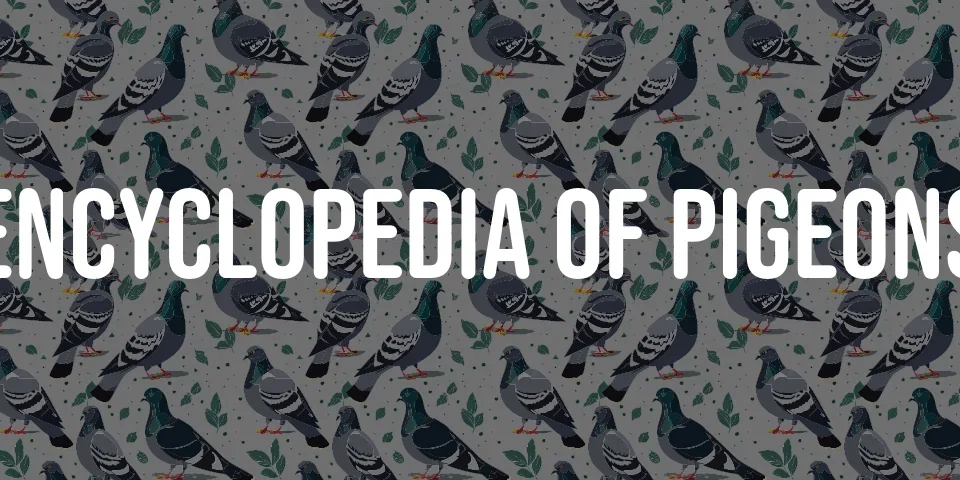Introduction to Valencian Homer Pigeon
Imagine a bird with the confidence of a matador and the colors of a painter’s palette—that’s the Valencian Homer pigeon for you. What a character: powerful wings, plumage that shimmers like the Mediterranean at sunrise, and instincts so sharp you’d swear they had a built-in GPS. These pigeons don’t just strut around; they own the skies in races and dazzle at shows. No wonder fanciers from all corners are enchanted by them.
Valencia, Spain—the name itself conjures oranges, festivals, and the echo of ancient footsteps—serves as the cradle for this breed. In that sun-drenched region, generations of breeders have obsessed over three things: speed that could challenge a bullet train, stamina worthy of a marathoner, and the kind of looks that make artists pause mid-brushstroke.
To call the Valencian Homer a mere bird is to miss the point. It’s a symphony of form and function, a feathered ambassador for those who want more from their pigeons than just a coo and a peck.
Origin and History of Valencian Homer Pigeon
Picture the bustling streets of old Valencia, centuries ago, where pigeons weren’t just background noise but prized companions. The Valencian Homer’s family tree winds through Spanish history, with roots so deep they might just tangle with the olive trees. Spanish breeders, diligent and perhaps a touch obsessive, fine-tuned this bird for petite size and plucky spirit. Legend has it the Moors—those masterful keepers of secrets—left their mark here before 1492, shaping what the breed would become.
In its earliest days, the Valencian Homer was the star of local pigeon races, zipping between distant rooftops with uncanny precision. But as decades passed, the breed’s fans wanted more than just speed; they wanted feathers that turned heads at exhibitions. The result? A pigeon that’s as much a piece of living history as a competitive athlete.
It’s not every day you find a bird that can outfly the competition and still look ready for a royal portrait. But then, the Valencian Homer isn’t your average bird.
What Makes Valencian Homer Pigeon Unique?
Agility, grace, and a personality that borders on mischievous—this pigeon is no wallflower. Its build is all streamlined muscle, a natural-born flyer that could give drones a run for their money. Racing? Absolutely. But it doesn’t stop there.
Take one look and you’ll see why exhibition judges lean in: feathers that gleam, patterns that seem individually painted, and the kind of stage presence you can’t teach. Here’s a bird that’s equally at home rocketing home from miles away or basking in the spotlight.
Brains match beauty in this breed. Whether navigating tricky terrain or charming a crowd, the Valencian Homer’s adaptability is its secret weapon. Sometimes you wonder if they practice poses in the mirror—if pigeons had mirrors, that is.
Characteristics of Valencian Homer Pigeon
It’s easy to spot a Valencian Homer in a lineup. The physique? Sturdy as a Roman arch, with an angular head that looks carved from stone. Wings built for business, eyes bright and alert, and a chest adorned with delicate frills—there’s a touch of drama in every detail.
These aren’t pigeons content to blend into the background. Their plumage can range from the subtle hues of a rain-washed city to the bold tones of a festival banner. At exhibitions, they’re the ones everyone whispers about.
But don’t be fooled by the beauty. Underneath those feathers is a navigational system as precise as any instrument. Release one miles from home and watch it slice through the sky, unerringly returning. Beauty and brawn—a rare marriage.
Physical Appearance and Unique Features
What’s in a look? For the Valencian Homer, everything. The body: compact but ready for takeoff at a moment’s notice. The head: all angles, a sculptor’s dream. The beak: neither too long nor stubby, but just right—Goldilocks would approve.
The feather palette is astonishing. Some shimmer like wet cobblestones, others flash emerald or violet in the sunlight. Those chest frills? Like a ruffled cravat on an 18th-century dandy, they add a flourish that’s hard to forget.
And the eyes—oh, the eyes. Lively and soulful, they give the impression these birds know secrets. Maybe they do.
Behavior and Temperament
Spend an afternoon with a Valencian Homer and you’ll find a companion both mellow and magnetic. They’re the kind of birds that sidle up for a scratch, then take off in a blur just to show off. Beginners and seasoned breeders alike find something to love in their temperament: docile when handled, but with a spark of energy that makes every flight a small celebration.
They bond with their keepers, sometimes to an almost comical degree—don’t be surprised if one insists on ‘helping’ while you clean the loft. When it’s time to fly, though, their true nature emerges: determined, focused, and almost impossibly graceful.
Performance and Flying Traits
If you’ve ever watched a Valencian Homer in flight, you know what poetry looks like in motion. Their bodies cut through the air, wings pumping with a rhythm that seems both effortless and unstoppable. Distance? They laugh at it. Obstacles? Consider them mild amusements.
Their stamina is legendary. Release them on a foggy morning and they’ll still beat you home for breakfast. Navigation is second nature: twists, turns, detours—these birds chart their course and stick to it with the tenacity of a courier on a mission.
And here’s the kicker: they don’t just fly well, they fly beautifully. There’s a kind of choreography to their movement, a blend of power and precision that makes even seasoned fanciers pause, just to watch.
Breeding and Reproduction
Breeding Valencian Homers isn’t a casual affair—it’s a partnership, a little like matchmaking with feathers. The healthiest, most vibrant pairs are chosen, and you can almost see the pride when they start building their nest together. Two eggs, usually. Eighteen days later, out pop the chicks—hungry and demanding, but doted on by both parents.
It’s a family business: mom and dad share feeding duties, and breeders keep a keen eye out for any sign of trouble. Hygiene matters. So does the health of the parents. Selective breeding isn’t just a buzzword here; it’s the heart of the process, ensuring that every generation gets a touch stronger, a shade more dazzling, and a dash more resilient.
Breeding History and Techniques
Breeding these birds is almost an art form—equal parts tradition and science. Spanish enthusiasts, past and present, have fussed over every trait: how they fly, how they look, how they behave. Only the best make the cut: strong flyers, birds with that signature plumage, and personalities that charm even the most jaded breeder.
- lineage charts,
- health logs,
- genetic notes scribbled in the margins.
But there’s also intuition, the sixth sense that tells a breeder which pairings will create magic. Modern methods mean less guesswork and more results, as genetics come into play to avoid pitfalls like inbreeding. The goal? A breed that’s as robust and radiant as the day it first strutted through a Valencian plaza.
Selective Breeding for Exhibitions
Shows aren’t won on looks alone…but it certainly helps. For the exhibition circuit, breeders play the long game: pairing birds whose feathers glint in the right light, whose head shapes echo the breed’s ideal, whose frills could start a fashion trend.
Genetics is the secret sauce. With every generation, careful tracking ensures that beauty doesn’t come at the expense of health. Lineage records pile up, and somewhere along the way, a bird is born that sums up everything the breed aspires to. These aren’t just pigeons—they’re walking, flying testaments to the breeder’s vision.
Crossbreeding with Other Pigeon Breeds
Sometimes, even tradition needs a shake-up. Enter crossbreeding: a controversial yet essential tool in the breeder’s kit. When handled with care, it introduces fresh energy—maybe a splash more speed, a new feather nuance, or stamina enough to impress even the most demanding judge.
But crossbreeding is no free-for-all. Choose the wrong partner and you risk losing everything that makes the Valencian Homer unique. That’s why records are kept with the diligence of a royal scribe. The result, when it works, is a bird that stands out—new, yet unmistakably Valencian at heart.
Care and Maintenance
Think of caring for a Valencian Homer as a little like running a boutique hotel for feathered guests. They need space—not just for perching, but for full-on flight practice. A well-ventilated loft is essential; stuffy air is the enemy. And don’t forget: the world is full of would-be predators and unpredictable weather, so safety comes first.
Diet? They eat better than most college students: grains, seeds, legumes, a sprinkle of vitamins, and always fresh water on tap. Cleanliness is non-negotiable. You’ll find yourself noticing tiny shifts in appetite or mood—these birds communicate in subtleties.
Training isn’t a chore, it’s a dance. It keeps them fit, sharpens their instincts, and, honestly, is often more entertaining than television.
Housing Requirements for Valencian Homer Pigeons
Forget cramped cages. These birds demand space and style. The loft must be roomy—think open-plan, not studio apartment. Air needs to move, but drafts are a deal-breaker. Protection from the elements is a must; these birds don’t care for surprises from sudden downpours or prowling cats.
- ample space for flight and exercise,
- ventilation without drafts,
- protection from weather and predators,
- regular cleaning for hygiene.
Cleanliness? It’s next to godliness here. A tidy loft is a healthy loft, and healthy birds are happy birds. Give them space to flap, stretch, and strut, and they’ll reward you with vigor and vitality.
Diet and Nutrition for Optimal Health
If you think pigeons live on breadcrumbs, think again. The Valencian Homer’s menu is a culinary tour: corn, wheat, barley, peas—fuel for distance and flair. Sunflower seeds and millet add crucial fats and proteins, while grit is the unsung hero, helping grind up those grains inside the gizzard.
Supplements? Absolutely. Vitamins and minerals pop up in their diet like cameos in a good movie. Clean water is vital, and feeding areas should be as spotless as a five-star restaurant’s kitchen.
When the seasons shift or breeding ramps up, so does the menu. It’s all about matching nutrition to need, keeping birds at their best, year-round.
Training Techniques and Health Check-Ups
Training a Valencian Homer is a lesson in patience and precision. Start small—short flights, nothing too ambitious. As confidence grows, so does the distance. Routine is everything; pigeons are creatures of habit, after all.
- gradual increase in flight distance,
- positive reinforcement with treats or gentle sounds,
- consistent training schedule.
Rewards, whether a favorite treat or a gentle coo, reinforce good behavior. But training without health is a fool’s errand. Vet visits are as regular as sunrise, scanning for signs of trouble: a limp, a cough, a feather out of place. Deworming, vaccinations, and a clean loft are the holy trinity of prevention.
Blend training with care, and you get a bird that’s not just fit, but formidable.
Uses and Cultural Significance
Walk through Valencia during festival season and you might catch sight of a Valencian Homer perched like a living jewel. Locals don’t just admire these birds—they revere them. At shows and exhibitions, their plumes and frills are the stuff of legends, and children press close to the cages, eyes wide with wonder.
But these pigeons aren’t just beautiful faces. Their story is woven into the cultural fabric, a living link to generations past and a symbol of pride and perseverance. They bridge the gap between utility and art, admired by both rural breeders and urban aficionados.
Role in Pigeon Shows and Exhibitions
On the exhibition stage, the Valencian Homer is a natural-born performer. Judges hover, measuring every angle: the head’s sharp cut, the vibrancy of the feathers, the flourish of chest frills. But it’s not pure aesthetics; behavior and flying prowess tip the scales.
Flight demonstrations add adrenaline to the mix. There’s a ripple through the crowd when a Valencian Homer takes off, every eye tracking its arc. Whether in the air or under show lights, this breed is never just another pigeon in the lineup.
Cultural Values and Popularity in Valencia, Spain
Valencian Homers are more than pets in their homeland—they’re emblems. At local gatherings, the birds become talking points, connecting people across generations. The pride is palpable, as if owning a Valencian Homer is akin to holding a piece of Valencia’s beating heart.
These pigeons have transcended their humble beginnings as messengers and racers. Now, they’re ambassadors, carrying the story of a region that prizes beauty, resilience, and a touch of flamboyance.
Comparisons with Other Pigeon Breeds
Stack a Valencian Homer next to a racing pigeon and you’ll spot the difference immediately. Sure, both are navigational marvels, but the Valencian Homer refuses to compromise on style. Racing pigeons are all business, built for speed and endurance, but often plain as oatmeal.
Meanwhile, the Valencian Homer is the peacock at the party—angular head, dazzling feathers, and the stamina to keep up with the best. Compared to the ornamental breeds—those fluffballs bred purely for looks—the Valencian Homer offers substance and spectacle in equal measure.
If pigeons had high school yearbooks, the Valencian Homer would win both “Best Dressed” and “Most Likely to Succeed.”
Valencian Homer vs. Racing Pigeons
It’s a showdown: form versus function, or perhaps, form and function in one feathery package. Racing pigeons are engineered for one thing only—winning the aerial equivalent of the 100-meter dash. Appearance? Optional.
The Valencian Homer, on the other hand, refuses to choose. Striking head shape, lush frills, the works—and still, they hold their own in a race. They’re the Renaissance birds of the pigeon world: versatile, handsome, and just a little bit proud of it.
Differences from Other Fancy Breeds
Some fancy breeds are all show, no go. Fantails and Jacobins, for instance, are like living sculptures: pretty, but often more suited to a display case than the open sky. The Valencian Homer scoffs at such limitations.
It’s got the dramatic looks—those sharp angles and flamboyant chest feathers—but also the muscle and mind to outperform in a race. It’s rare to find a breed that nails both beauty and brawn, but here it is, strutting across the best of both worlds.
Challenges and Considerations
Raising Valencian Homers isn’t all sunshine and show ribbons. These birds are sensitive—fussy about temperature, particular about space, and frankly, not cheap to keep. Their needs can intimidate newcomers: pristine lofts, specialized diets, regular vet visits.
- sensitivity to temperature changes,
- requirement for spacious, clean housing,
- higher costs for proper care and nutrition.
Costs add up, and the reward is only as sweet as your commitment. But, as any seasoned keeper will tell you, the payoff comes in flashes: a perfect flight, a blue-ribbon moment, or just the contented coo of a bird thriving under your care.
Pros and Cons of Raising Valencian Homer Pigeons
Let’s stack the scales. On the plus side: compact size (easy on the real estate), a personality that’s equal parts friendly and fascinating, and looks that steal the show every time. There’s a sense of history in every feather, a legacy that makes keeping them feel like joining a centuries-old club.
- compact and manageable size,
- engaging personality,
- distinctive, show-stopping appearance,
- rich historical legacy.
But there are caveats. Breeding is a hands-on affair, and these birds can wilt in harsh weather. Expenses pile up—think boutique hotel rather than roadside inn.
The sum? For those who are ready, the Valencian Homer offers a feast for the senses and a challenge worthy of the time. For the unprepared, well, there are easier birds to keep.
Common Health Issues and Solutions
Even the healthiest Valencian Homer can run into trouble. Respiratory bugs lurk in damp lofts, while parasites—those tiny freeloaders—can sap a bird’s strength. Diet matters, too; miss out on the right vitamins and you’ll see it in dull feathers and sluggish behavior.
- respiratory infections from poor ventilation,
- parasitic infestations,
- nutritional deficiencies affecting feather and bone health.
Solutions are part common sense, part vigilance. Clean air and space are non-negotiable. Routine check-ups can save a bird’s life. Deworming, vaccinations, and a menu rich in grains, seeds, and supplements keep the flock robust. Vitamins A and D are particularly important—think of them as the secret ingredient for bone strength and immunity.
And never, ever skimp on fresh water. It’s the elixir that keeps these feathered athletes in winning form—because after all, even a champion needs a good drink.






